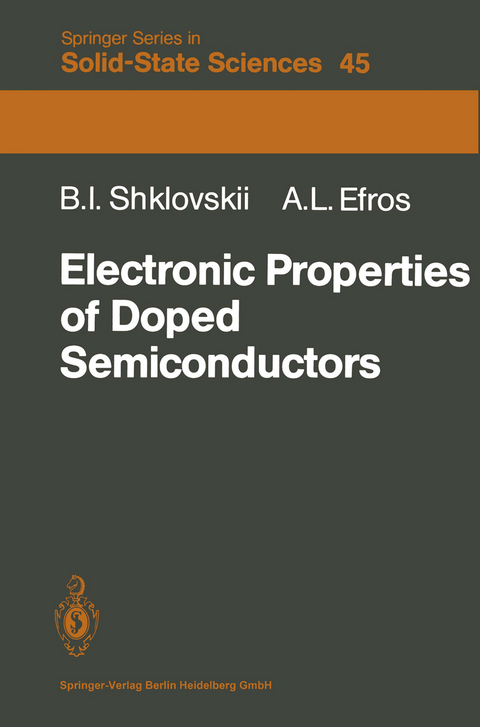
Electronic Properties of Doped Semiconductors
Springer Berlin (Verlag)
978-3-662-02405-8 (ISBN)
I Lightly Doped Semiconductors.- 1. The Structure of Isolated Impurity States.- 2. Localization of Electronic States.- 3. The Structure of the Impurity Band for Lightly Doped Semiconductors.- 4. A General Description of Hopping Conduction in Lightly Doped Semiconductors.- 5. Percolation Theory.- 6. Dependence of Hopping Conduction on the Impurity Concentration and Strain in the Crystal.- 7. Hopping Conduction in a Magnetic Field.- 8. Activation Energy for Hopping Conduction.- 9. Variable-Range Hopping Conduction.- 10. Correlation Effects on the Density of States and Hopping Conduction.- II Heavily Doped Semiconductors.- 11. Electronic States in Heavily Doped Semiconductors.- 12. The Density-of-States Tail and Interband Light Absorption.- 13. The Theory of Heavily Doped and Highly Compensated Semiconductors (HDCS).- III Computer Modelling.- 14. Modelling the Impurity Band of a Lightly Doped Semiconductor and Calculating the Electrical Conductivity.- References.
| Erscheint lt. Verlag | 8.12.2012 |
|---|---|
| Reihe/Serie | Springer Series in Solid-State Sciences |
| Übersetzer | S. Luryi |
| Zusatzinfo | XII, 388 p. |
| Verlagsort | Berlin |
| Sprache | englisch |
| Maße | 155 x 235 mm |
| Gewicht | 623 g |
| Themenwelt | Naturwissenschaften ► Physik / Astronomie ► Atom- / Kern- / Molekularphysik |
| Naturwissenschaften ► Physik / Astronomie ► Festkörperphysik | |
| Naturwissenschaften ► Physik / Astronomie ► Optik | |
| Naturwissenschaften ► Physik / Astronomie ► Thermodynamik | |
| Technik | |
| Schlagworte | Absorption • Crystal • electronic properties • Electronics • Properties • semiconductor • Semiconductor physics • semiconductors |
| ISBN-10 | 3-662-02405-5 / 3662024055 |
| ISBN-13 | 978-3-662-02405-8 / 9783662024058 |
| Zustand | Neuware |
| Haben Sie eine Frage zum Produkt? |
aus dem Bereich


